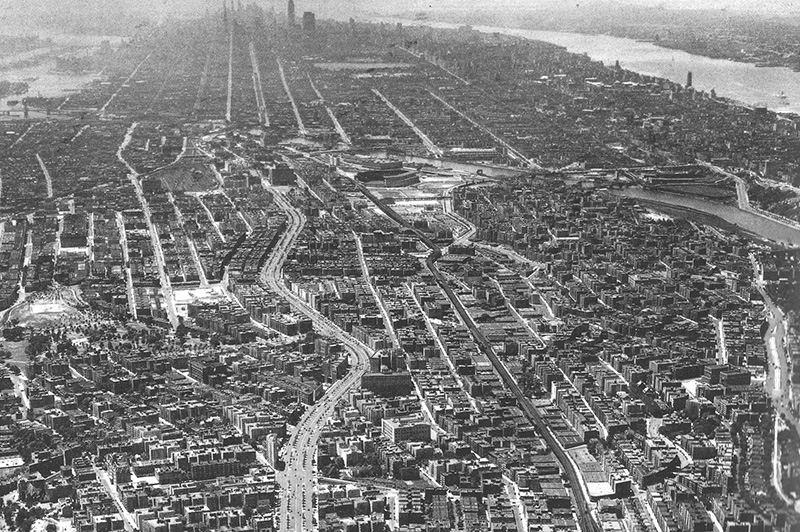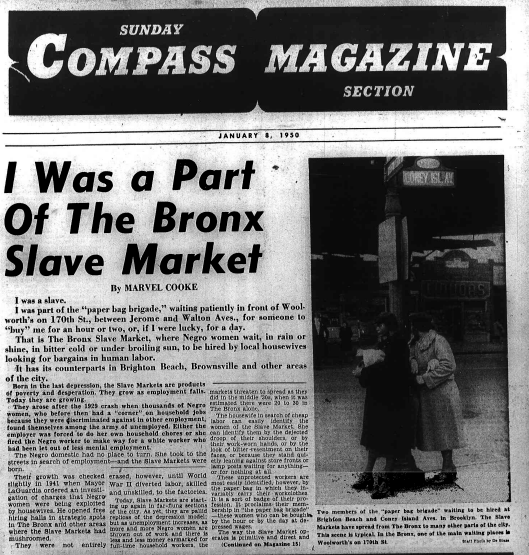 Photo via City-Data from Wikimedia Commons
Photo via City-Data from Wikimedia Commons
In the present day, few outsiders would dare to venture into the Grand Concourse section of the Bronx, due to its notorious reputation as a dangerous neighborhood. But the area known as the “Champs-Élysées of the Bronx” is steeped in a rich cultural history, from its dark past as part of the Bronx Slave Market to its Paris-inspired roads. To find out why there is a German fountain in Joyce Kilmer Park, or why Edgar Allan Poe’s cottage was moved, read our top ten secrets of the Grand Concourse in New York City
10. The Grand Concourse Was Home to the Bronx Slave Market

New York is not the first place that comes to mind when talking about slavery in America. But in early to mid 20th century, the Grand Concourse and other Bronx neighborhoods were home to the Bronx Slave Market. From the 1930s to the 1950s, African-American women and men would congregate on street corners in hope of finding employment by wealthy white citizens. If they were given jobs for the day, the labor was often physically demanding and they would only be paid 30 to 50 cents a day. Journalist Marvel Cooke wrote an exposé about the slave market for ‘Viewpoint Magazine’ in 1950.





